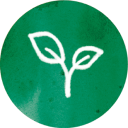Day 20
Ambulance for two villagers in Bangladesh
 When a life depends on 35 cents
When a life depends on 35 cents


Medical care for women and children in rural Bangladesh

need
Access to medical care for poor patients in rural northern Bangladesh.
activity
Employees of local NGOs organize transport of patients to the hospital and help to ensure treatment there.
Measurable performance
Number of assisted patient transfers to hospital and number of patients who were provided access to medical treatment.
Result
Compared to the previous year, the health status of 2,400 families has improved. Adults can contribute productively to income security.
Systemically relevant impact
The disparity in access to public health services has been reduced, and economic discrimination in hospitals has decreased measurably.
background


The good deed
AboutBangladesh

Dhaka
Capital city

156 595 000
Population
1 172 USD
Gross domestic product
per capita per year
142
Human Development Index
(Human Development Index)



